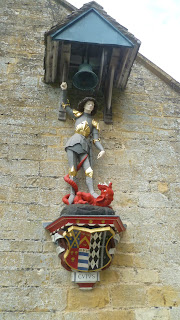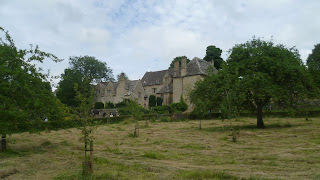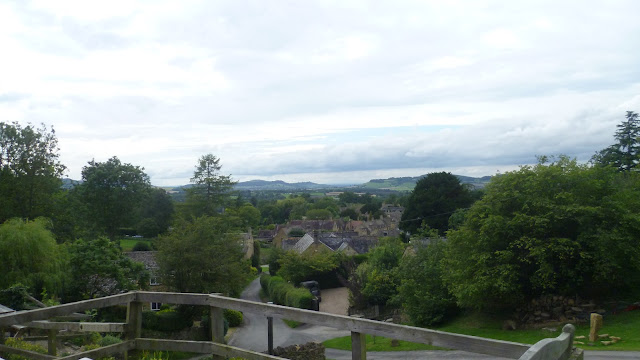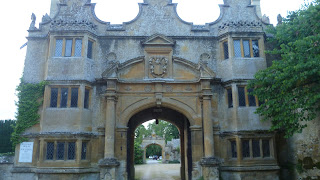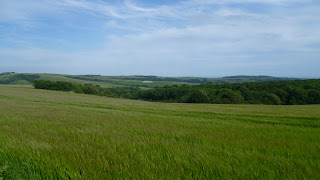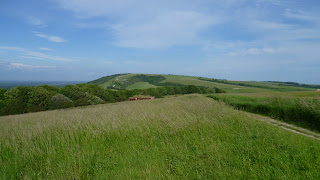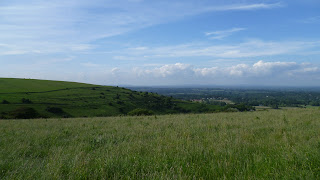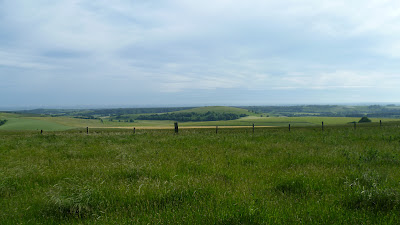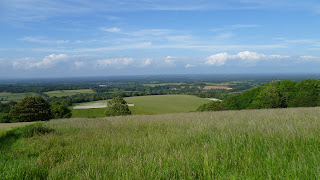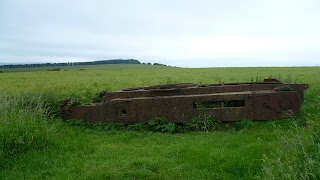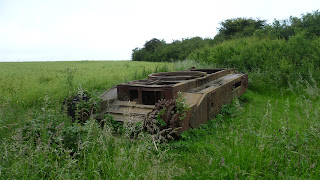The Stanton-Snowshill
-Stanway triangle
I have just been to the Cotswolds for a long weekend with a
university friend who has never been to the Cotswolds. The proper way to tour
the Cotswolds of course is in a 1930s Bentley wearing slacks, pastel jumper and
goggles, maybe a pipe protruding from your mouth, but we had to make do with our own state of the art modern cars. We
spent a day hovering around Snowshill, Stanton and Stanway, a gaggle of
villages that encapsulates what the Cotswolds is all about. Take your pick
which is your favourite, all would qualify in some way.
We set out from Mickleton, nipped into Broadway for a little
shopping, returned to the B & B so I could change into shorts as the
weather was getting a little warm for jeans, then headed for Snowshill. We approached
the village from the north along
a lane bordered by lavender fields. First we visited Snowshill Manor, an
ancient pile sitting on the edge of the village with a gate that spills onto
the village green. It has great views across the valley that encases Snowshill,
and belongs to the National Trust
family, so charges a tidy sum to get in unless you are a member, which I was.
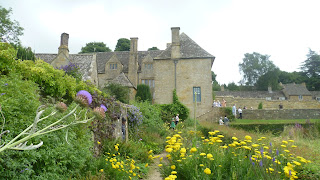 |
| Snowshill Manor |
You approach the house by a path of some length which trails
across the front of the property grounds and then snakes up the right hand side
to a gateway. Here we were met by a well-spoken
English gentleman wearing a fetching straw hat and carrying a parasol,
offering a 20m tour of the outside of the house. We joined the tour and were
told all about Mr Charles Paget Wade (1883-1956), the owner of the house who during his life collected all sorts of stuff to fill up his mansion with. Of course folks like
him would have had the time and income to do this sort of thing, and now it
gives substantial visitor numbers lots of pleasure. And it was seriously busy. Mr Wade actually
lived in one of the outbuildings where you can see his living quarters, bedroom
and bathroom complete with all fixtures and fittings, and the outdoor pool where he bathed. There is
also a sizeable kitchen garden sloping down from the attractive formal gardens.
In addition he had a miniature village built alongside one of his pools.
The house itself is a pleasant jumble of rooms filled with
all sorts of paraphanalia. One room upstairs is full of Samurai warriors,
another has on display myriad different bikes from a bygone age, including a
huge penny farthing. A further room is devoted to weaving and spinning, with
various bits of machinery for the manufacture
of clothing, another has sets of old tools presumably used by Mr Wade. One indoor
visit like this on a long sunny weekend is just about all the human psyche can
endure, my friend referring to ‘fusty
old rooms.’ Only a certain number of
which can be observed before the overwhelming desire for fresh air on a
glorious weekend takes over. Having said
this, the house is well worth a visit and the outside talk was entertaining.
What does one do at midday but find some food, although
midday was morphing into mid afternoon by the time we finished with Snowshill
Manor. Down to Stanton we drove to visit the Mount Inn which must have one of
the most ‘right on’ views of a pub garden in the UK. http://www.themountinn.co.uk/index.php.
The inn stands slightly above the main village, at the end of the main street, just on the Cotswolds scarp slope, and has great views across the valley to the west and to distant hills. We found a viewpoint and I went to order, but the waiter informed us they closed at 3pm, a time which had transpired a few minutes earlier. You cannot sit in such a spot and suddenly leave, so we had water, crisps and an apple between us before moving on to Broadway to grab a very late sandwich.
The inn stands slightly above the main village, at the end of the main street, just on the Cotswolds scarp slope, and has great views across the valley to the west and to distant hills. We found a viewpoint and I went to order, but the waiter informed us they closed at 3pm, a time which had transpired a few minutes earlier. You cannot sit in such a spot and suddenly leave, so we had water, crisps and an apple between us before moving on to Broadway to grab a very late sandwich.
Broadway as you would expect on a sunny August Saturday was
absolutely teeming with tourists. It is the place to bring your mum for afternoon
tea, take note. We met one of our fellow
B & B guests, a splendid Italian chap brandishing his camera and indicating
his surroundings with cries of ‘bella’ and ‘bellisimo.’ He evidently liked the
place. We raided Budgens PS (posh supermarket) for a sandwich and grabbed a
welcome coffee from the machine. Much as Broadway is a pull, we had to keep to
our plan as the jungle and fierce wildlife in the triangle between Stanton,
Snowshill and Stanway awaited us. You may laugh, but just days ago a driver on
the Winchcombe – Cheltenham road spotted what looked like a panther on their journey.
There is even an article about big cat sightings in Britain in the July issue
of Lonely Planet.
This is the link for the recent sighting if you don't believe me: http://cryptoville.wordpress.com/2012/08/28/beasts-of-britain-new-sightings/
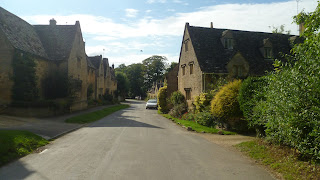 |
| Stanton |
Returning to Stanton, we donned walking boots and headed up
through the village, past the Mount Inn and up the Cotswolds scarp slope
heading towards the hidden gem of Snowshill. A little white terrier appeared in front of us
and led the way up the footpath for some considerable time, occasionally looking
behind him to check we were following. He obviously realised how important we
were, but unbelievably disappeared into a sheep field later on, and we were
left to find the route on our own. But we had a great map, and it would be
easier to lose yourself in your own front room. After climbing the scarp
slope, allowing a school of horse-riders to pass, and negotiating some woodland, we found
ourselves in a meadow looking down on Snowshill, a perfect English summer
afternoon’s picture to feast on as we sat down for a break.
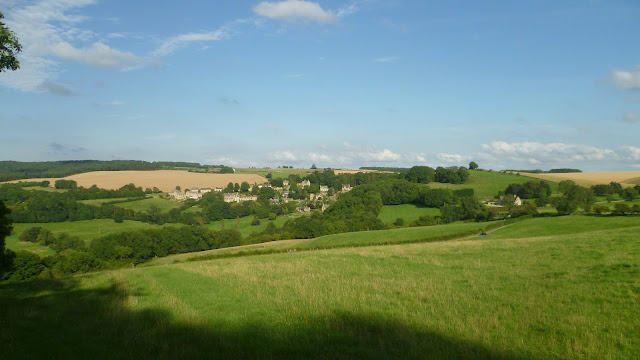 |
| Our view of Snowshill |
 |
| Snowshill cottage |
Reaching the village later we had a drink in the pub beer
garden, although it was a little shame that vegetation hid the best of the
valley’s views from us. Snowshill of course fulifils all the clichés, and Bridget Jones Diary used the village for
filming, although there was no sign of men in bright jumpers with pictures of
reindeer on them. After taking a few pictures around the village green, we set
out towards Stanway back at the bottom of the scarp slope just south of
Stanton. A foray across the fields and then through extensive woodland on the
scarp brought us back down past Stanway House. Here there appeared to be a
large social event going on in the gardens, looking suspiciously like a
wedding. It called for white slacks, a striped blazer, a straw hat and an
invitation, so we just peeped into the impressive grounds and continued on past
the cricket pitch to the left and followed the Cotswolds Way along the scarp
slope.
Returning to Stanton
we really had to eat at the Mount Inn and indeed found outside seats with that
view. Just made it before 9pm cut off this time and enjoyed sausages, mash and
vegetables plus drinks, although the sloping table caused the gravy to overflow my plate
and drip onto the ground! A tray of tea (really pushing out the boat!) later rounded off an excellent day as we watched the night descend on a
relatively warm evening.
The walk is an easy two to three hours depending on how
quick you go, but of course you cannot fail to stop at some cosy pub or killer
viewpoint to use up a bit more time.
